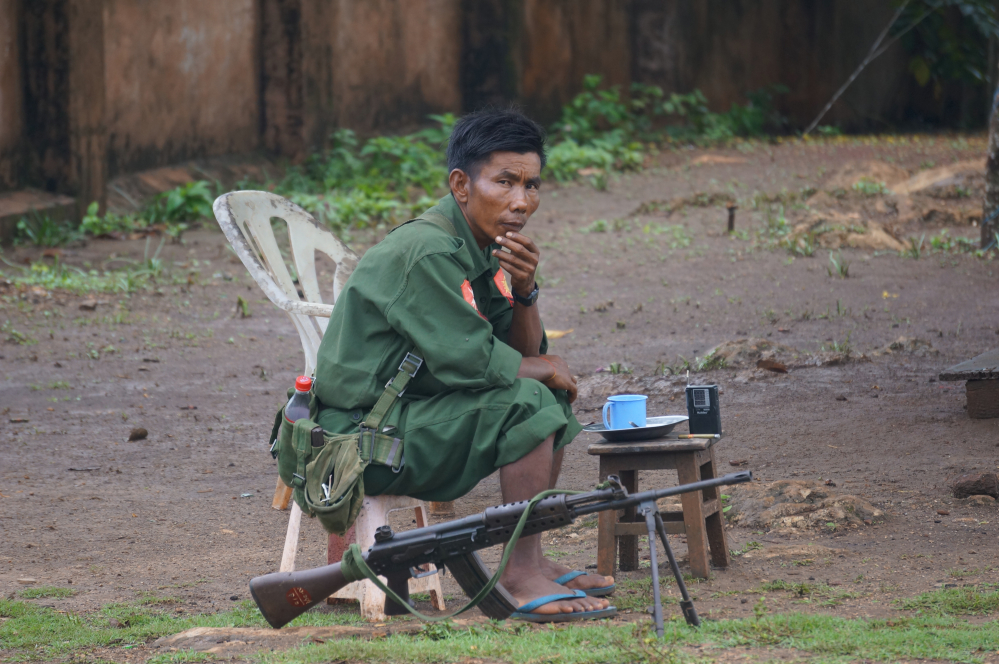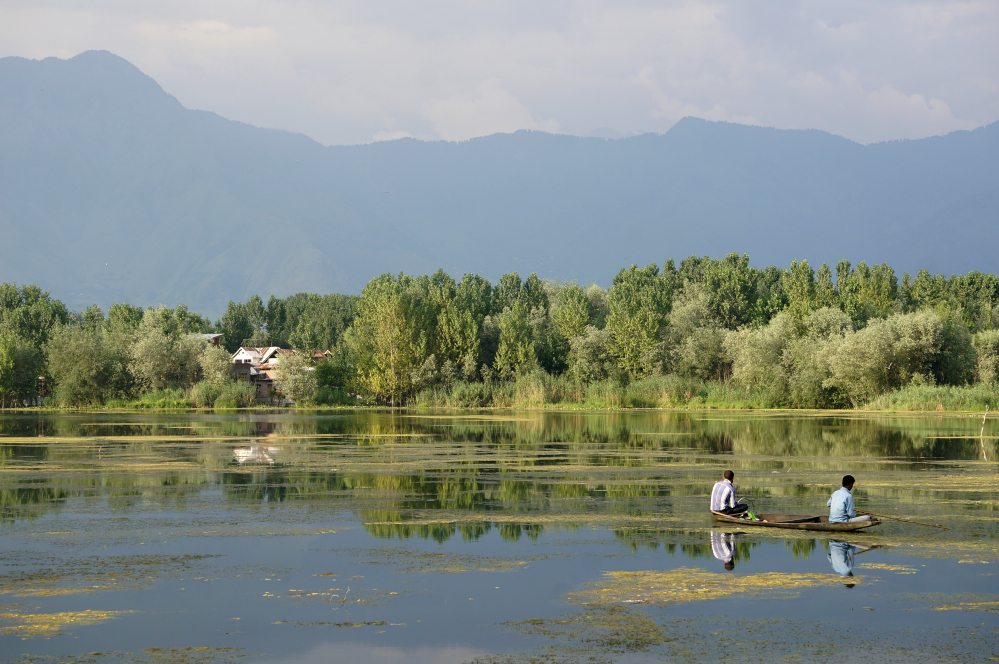Dhaka is a corrugated city, a horn-blowing city, a city of decibels; a bus city, a bell-ringing city, a rickshaw city; a Muslim city, a veiled city. The rich veiled in silk, the poor veiled in cement. The women veiled in saris, the men veiled in beards. The men veiled in faith, the women veiled by faith.
“Your country name, sir?”
“Australia.”
“Oh, very lucky country. You are rich and I am poor.”
In my rickshaw I pass bike tyres, sunglasses, portable cookers, sweet shops, pastries and cigarettes and shoes and cement and strips of metal and wood and lychees, mangos, apples, oranges and toilet bowls. Bamboo construction and holes and smells and fumes. We ride acne scar roads and meteor craters, and occasionally suffer a painful rickshaw tremor. There are so many potholes they’d be better off clearing the roads rather than trying to fill them in.
We arrive in old town where the streets are narrow and full. The air smells of chapatis and paratas and naans and curries of Bhajee and Kofta and Tikka and Tandoori. Men colour their hair and beards orange with the plant dye henna to emulate the Prophet Mohammad and women walk the streets in colourful saris and long pants with studs in their noses.
“Australia. Great cricket team. Shane Watson. Glen Maxwell. Five times world champion.”
A group of workers holding rusted tools wait on the street for a foreman to hire them for the day. Among the group there are old men and old women who would be considered pensioners in Australia. A day’s work can earn them A$4 which I’m told is not bad for Bangladesh. The workers are most likely among the 45 million Bangladeshis who live below the poverty line. That’s almost one third of the population. Many of the workers are domestic temporary migrants from rural areas who send money home for remittance leaving little for their own welfare. There are corrugated iron shanty towns all over Dhaka, some built on stilts over watercourses accessible by boat. Within these shanty towns children follow me screaming down muddy pathways. Teenagers play cricket and football on small stretches of land encircled by polluted water.
“You play cricket? You can have a bat. Be my guest.”
At the black market men sit on the street making replicas of stolen goods to sell. They hammer at engines and chains and reshape distorted metal. Masters of the art of steel; masters of the art of steal. At the car yard there are mechanics half my size. The youngest is ten years old. He has a shy smile but is willing to stop his work and clean his hands for me. He left school a year ago, the garage doesn’t hire anyone under nine years of age, I am told. He needs to support his family, I am told. He works twelve, thirteen, fourteen, sixteen hour days, six days per week. Whatever is needed of him, I am told. He earns 4,000 Taka (A$65) per month. The mechanics who are of age receive just 10,000 Taka (A$165) per month. One man tells me he started as a mechanic when he was seven and he is now twenty seven and still a mechanic. These are a few of the 7.4 million working children in Bangladesh.1
“And what does your father do?”
We pass the former residence of the ‘Father of the Nation’, Sheikh Mujibur Rahman, and I am told the tumultuous history of the country. Bangladesh was separated from India in 1947 during the ruthless partition of the sub-continent and became the eastern half of Pakistan. My guide, Gulam, proudly recounts how Bengali students led the opposition to West Pakistani domination. They fought for their right to speak their own Bengali language in their own region. The ethnic nationalism empowered by the Language Movement in 1952 eventually birthed the fight for independence. In 1971, the War of Liberation plunged the nation into nine months of atrocities where, Gulam tells me, Pakistani forces raped an estimated 200-400,000 women and killed 3 million Bengalis. India was first to recognise the nation of Bangladesh on 6th December 1971 but the following years were marred by the assassination of the ‘Father of the Nation’ and his family members in his own home in 1975. Following the death of Sheikh Mujibur Rahman the country was plunged into a military coup and then another military coup in 1982 and only since 1991 does Gulam feel like Bangladesh is on the right track. It is a tale that reads like a Marquez novel.
“Oh, great job. Fine man. And what is his name?”
Women sit in rows cutting material for plain t-shirts. They cut material and they repeat. The next floor is full of women sewing chequered boxers. This is the controversial $19-billion-a-year garment industry of Bangladesh. I want to see sweat shops and slave labour but instead I get banality. I am told such factories don’t exist any more. After five deadly incidents in 2012 and 2013 which claimed over one thousand lives the government and the industry, facing international boycotts and condemnation, claims to have accepted and implemented reform.
Employees on the floor work from 8am-5pm with a one hour lunch break, 6 days per week. The factory pays trainees 5,400 Taka (A$90) per month and full time employees 7,000-8,000 Taka (A$115-$130) per month. The managers of my compliant factory say that operating costs have skyrocketed since compliance; costs that fell squarely on the shoulders of the factories. Yet the Western companies who demanded the reforms still expect the same cheap prices. I am told there are still non-compliant factories for domestic-based products that do not export internationally but no-one can or will take me to them.
“And do you have a wife?”
Geneva Camp is not as destitute as I had expected of an urban slum for stateless people. We walk amongst shoe makers and food stalls and hairdressers, where I am told I might contract Typhoid, and a fish market and sharp lane ways and markets of fabrics and a field of children playing cricket and football on top of each other. The Bihari people were punished for their role in the Bangladeshi War of Independence, for their support of the Pakistani army and their participation in the atrocities against the Bangladeshi people. Neither citizens of Bangladesh nor of Pakistan, they remained in ‘Camp Geneva’ indefinitely. The situation is a lot better for the Bihari people now, I am told. More integration and less prejudice. People are intermarrying and the slum is shrinking. On May 19, 2008, the Dhaka High Court approved citizenship and voting rights for about 150,000 Bihari refugees who were either born in the country after the War of Independence or were minors at the time.
“I am Mohammad Moklesur Rahman. It is a very pleasure to meet you.”



